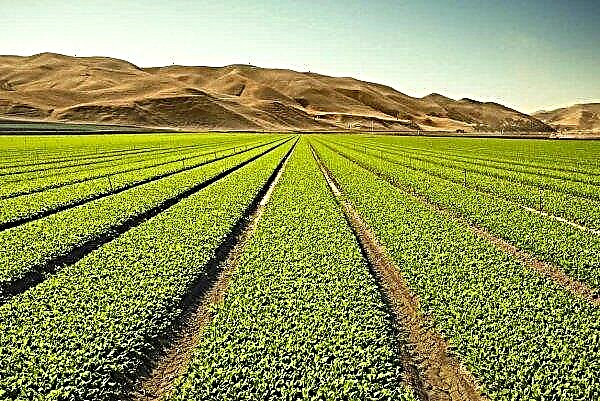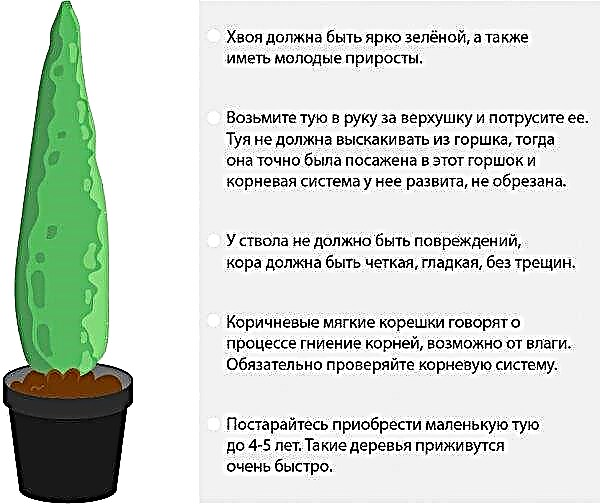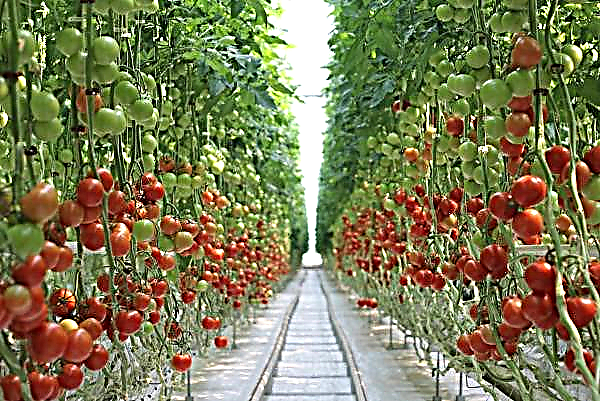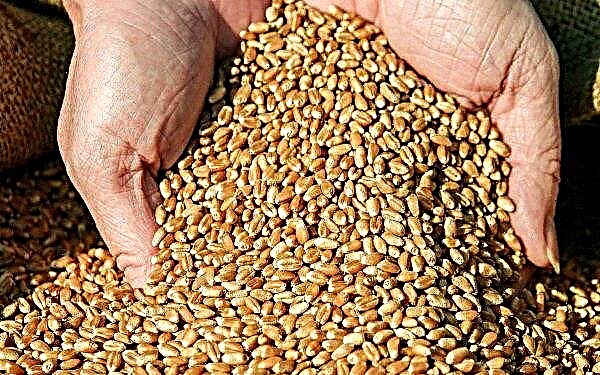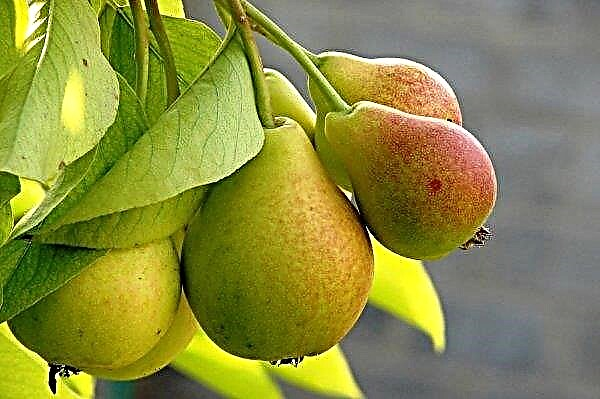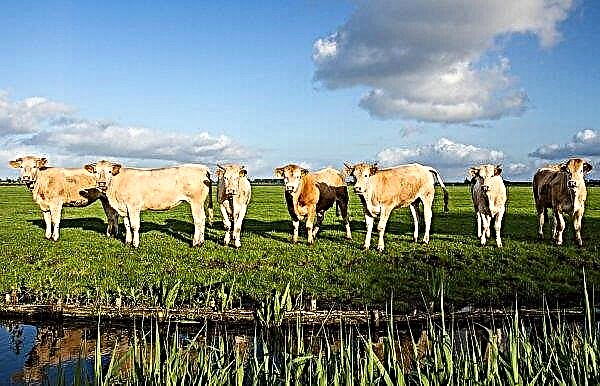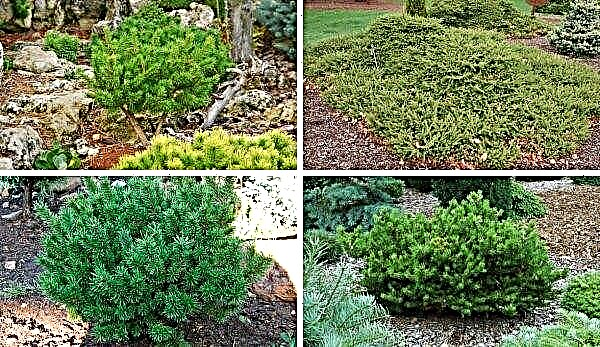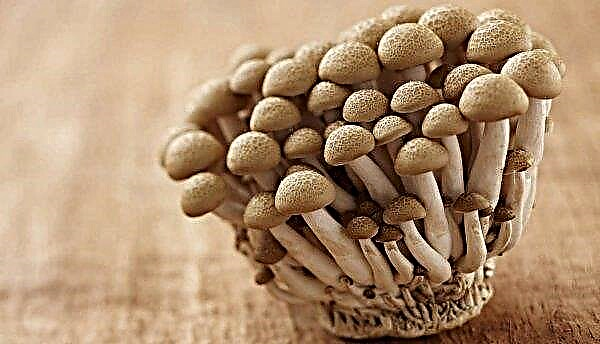Winter wheat is grown on a large scale for use in the food industry and other spheres of human activity. One of the most promising cultivars is Bagrat. About what characteristics the mentioned wheat possesses, and how to care for it in the process of cultivation - read further in the article.
Breeding history
Bagrat wheat was bred by crossbreeding Moskovskaya 39 seeds with the Lyutescens 201-93k3 line. The selection was carried out by the staff of the Krasnodar Research Institute of Agriculture named after Lukyanenko P.P. In 2011, the variety was accepted for testing, and only in 2015 it was officially registered at the state level.
Grade description
Wheat belongs to the genus of grassy, annual crops. She is a member of the Cereal family. The variety is medium-tall, the maximum height of the plant is 1 m. It differs in the quality of seeds and the intensity of growth in the spring.
Appearance
Spikelets have the shape of a pyramid. Their length reaches 11 cm, the density is average. In the upper third of the spikelet there are sphenoid processes that are 2–4 mm long. The scales are extended (8-9 mm), width - up to 4.5 mm. Its teeth are straight, slightly curved, and its shoulder is slightly slanted.
Did you know? According to the legends of the ancient Slavs, wheat grain is a symbol of wealth and life. It protects a person from envy and corruption.
Seeds are oblong, medium in size, bare at the base, with a shallow furrow. The stems are straight, hollow or executed, yellow-gray. Leaf plates - elongated, green, rough to the touch.
Taste qualities
This variety is widely used in the food industry. Flour is produced from winter wheat grain, which is excellent for baking bread and rolls. Bagrat seeds have a neutral, freshish flavor. After chewing, you can feel a light, sweet aftertaste, formed due to the fact that the grains contain a lot of glucose.
Advantages and disadvantages
- Among the advantages of this variety can be distinguished:
- high rates of grain germination - up to 96%;
- drought tolerance;
- resistance to brown and stem rust, dust smut, powdery mildew.
The disadvantage of the described variety is the average indicator of resistance to diseases such as fusarium, leaf blotch, septoria.
Main characteristics
The middle early variety Bagrat has a vegetative period of 7-8 months. Germination rates are 96%. Yield per hectare - 88 c. The weight of 1000 grains is 46 g. The drought resistance of the Bagrat variety is high, it is not demanding on watering.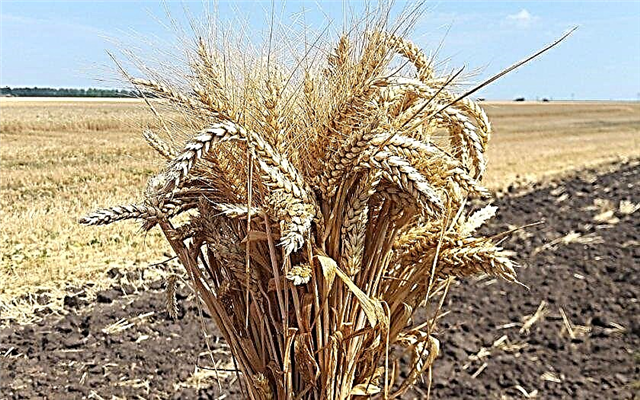 Resistance to frost is estimated as average, plants withstand a temperature drop of -15 ° C. Wheat has good immunity to the most dangerous fungal diseases described in paragraph above.
Resistance to frost is estimated as average, plants withstand a temperature drop of -15 ° C. Wheat has good immunity to the most dangerous fungal diseases described in paragraph above.
Growing rules
Wheat develops in two stages. After planting, the first period of the life cycle begins, which lasts two months. It is characterized by the active formation of the vegetative organs of the plant. The second stage lasts three months, during which the development of the generative organs takes place. Sowing grains to a depth of 5 cm. To do this, use the usual row method, in which a width between rows of 15 cm is observed.
Important! Sowing wheat in the same place is possible only with an interval of 2 years. If the time period is not respected, then the culture will become more susceptible to diseases and pests.
Suitable prior cultures
From what precursors grew on the field before sowing winter wheat, its growth and development will directly depend. This is because any plants act on the soil, only after some it is depleted, and after others, on the contrary, it is enriched with nutrients.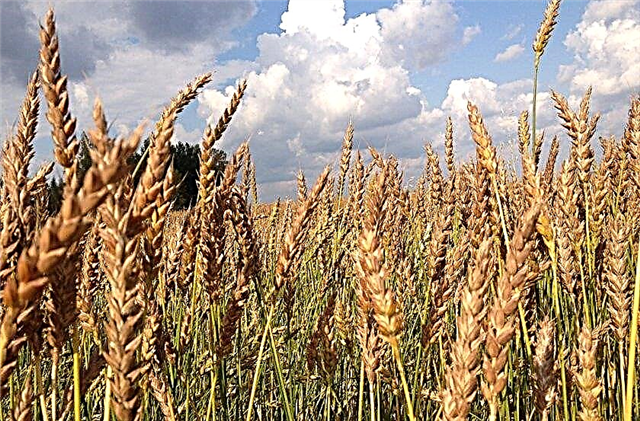
List of preferred crop predecessors before Bagrat cultivation:
- corn;
- peas;
- beans;
- buckwheat;
- rape;
- oats;
- potatoes.
Oat is the best precursor for sowing wheat, because it enriches the soil with nutrients and protects the plant from a disease such as root rot.
Dates for boarding
The planting period for winter wheat is the beginning or middle of the first month of autumn. You should know that on fertile soils, this culture will grow faster, so it is planted in the 20th of September. On depleted, infertile soils, planting is best done at the beginning of the month. It should also be noted that before the onset of frost, wheat should form 2–4 full sprouts, which will take about 2 months.
Video: crops of winter wheat at different times
Soil requirements
The most suitable soil for sowing winter wheat is chernozem. In general, the soil should be fertile, saturated with nutrients in the form of: potassium, phosphorus and nitrogen. The structure of the earth is light, well-permeable, saturated with oxygen. Acidity indicators should be at a neutral level.
Care
Wheat fields should be monitored on a regular basis. If you do not make timely fertilizing of crops with fertilizers, and do not perform preventive work to combat diseases and pests, you can lose a large percentage of the crop. Read about what additional nutrition is required for winter wheat, as well as how to deal with fungal diseases of this culture.
Fertilizers
Mineral fertilizing should be made in the following periods:
- basic soil treatment;
- when sowing;
- during the period of active vegetation.
When preparing the land before planting, it is necessary to plant in the soil a full dose of fertilizers consisting of phosphorus and potassium - 15 kg per hectare of crops. During the process of planting seeds, phosphorus and potassium salts are added to the rows. 10-15 kg of fertilizers are used per 1 ha.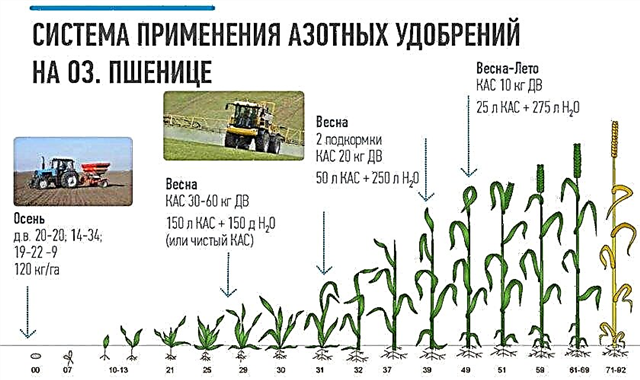
During the entire growing season, it is necessary to produce three nitrogen top dressings, consisting of nitrophoska (70 g per 1 m²):
- First - after snowmelt, in early spring. Contribute to the roots of plants.
- Second - spend in the period of exit of the culture into the tube.
- Third feeding nitrogen is carried out during the transition from heading to pouring grain.
Pest and weed control
Weed grass, which grows in the rows of winter wheat, during its life leads to dehydration of the soil, and also takes nutrients from the cultivated plant. Such plants are cereal grasses - tallow and common oats. Shoots of the latter appear during the spring thaw. It can take root to a depth of 20 cm.
Important! Mixing the soil with granules of mineral fertilizers during plowing will contribute to the rapid growth of plants, and strengthen the root system.
Flowering of this plant is observed in June, and at the end of summer seeds appear. One weed can grow up to 500 seeds, the mass of which will be up to 15 g. Metlitsa grows well on soils that are poor in calcium. Its “fruits” ripen before the end of summer. Grain productivity reaches up to 2000 seeds from one instance. Weed control is done with herbicides.
Most often they use such means:
- "Arkan";
- Logran
- "Cowboy".
Drugs are diluted and used according to the instructions that accompany them.
Did you know? Wheat was domesticated between 10,200 and 6,500 years ago. Her cultivation was carried out gradually, which ultimately led to the development of new varieties that are not prone to shedding grains.
The most dangerous pests that attack winter wheat are: wheat thrips and ground beetle.
- Thrips presented in the form of a small bug, up to 2 mm in length. Its color is black, the body is oblong, narrow. On the back there are 2 wings covered with thin hairs. Thrips suck the juice from the stems and leaf plates of the plant, as a result of which small black spots form on the surfaces, and the seeds become puny and deformed. To combat thrips use the drug "Decis", it is bred according to the instructions.
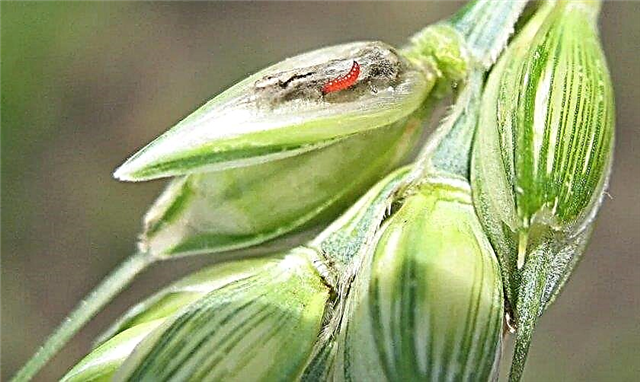
- Ground beetle grows to 15 mm in length. Its color is black, on the wings there are deep, pointed furrows. Beetles eat spines and ears of ears. A massive invasion of parasites can lead to significant crop loss. In order to get rid of ground beetles, use the drug "Diazinon", diluting and using it according to the instructions.

Bagrat winter wheat cultivation requires crop rotation and careful selection of soil for its crops. But, if you follow all the rules of agricultural technology of culture, then as a result you can get a rich harvest, which is famous for this variety.



